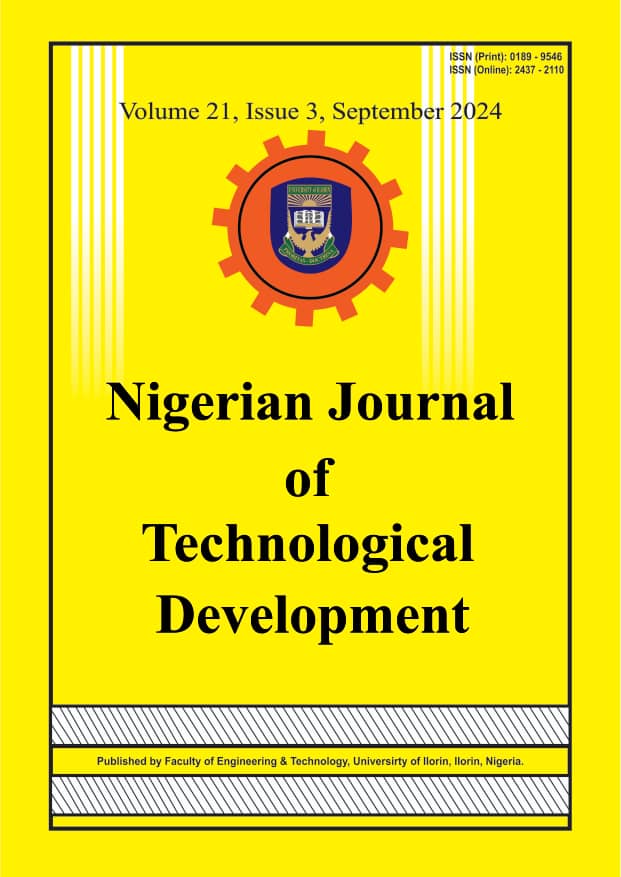Impact of Design Dimension Optimization on Capacitive Sensor Performance for Particulate Matter Detection and Measurement
DOI:
https://doi.org/10.63746/njtd.v21i3.2260Keywords:
particulate matter, particulate sensor, IDE optimization, IDE sensitivity improvement, IDE capacitive sensing, carbon black detection, DPF monitoringAbstract
Particulate matter (PM) emissions from exhaust gases are major pollutants and cause serious health problems. Diesel particulate filters (DPF) are used for monitoring and trapping particulates from exhaust gases. For sensing these particulates sensors are used downstream of a DPF. The present study proposes an interdigitated electrode (IDE) capacitive sensor for detecting and measuring deposited particulates on the sensor surface. The sensor dimensions are optimized to detect and measure the least deposition of particulates. The paper presents improvement in sensor performance, a high selectivity of 65.70% with an accuracy of 87.26%. Dimension optimization extracts capacitance of 581 pF manifolds 10 times more than the reference sensor from the literature. The study presents a sensor with a thin sensing layer manufactured by optical lithography and a lift-off method for IDE. Measurements and testing showed that the sensor measures the lowest particulate mass of 0.0045 mg in 3.4 ms.
References
A. Sappok and L. Bromberg. (2013). Development of Radio Frequency Sensing for In-Situ Diesel Particulate Filter State Monitoring and Aftertreatment System Control. In Internal Combustion Engine Division Fall Technical Conference, V001T04A004, American Society of Mechanical Engineers.
A. Sappok; P. Ragaller; A. Herman; L. Bromberg; V. Prikhodko; J. Parks; J. Storey, J. (2017). On-Board Particulate Filter Failure Prevention and Failure Diagnostics Using Radio Frequency Sensing. SAE International Journal of Engines, 10(4): 1667 - 1682.
A.V. Mamishev; K. Sundara-Rajan; F. Yang; Y. Du. and M. Zahn. (2004). Interdigital Sensors and Transducers. Proceedings of the IEEE, 92(5): 808 - 845.
D. Back; D. Theisen; W. Seo; C.S.J. Tsai and D.B. Janes. (2020). Development Of Interdigitated Capacitive Sensor for Real-Time Monitoring of Sub-Micron and Nanoscale Particulate Matters in Personal Sampling Device for Mining Environment. IEEE Sensors Journal, 20(19): 11588 – 11597.
F. Yaghouti Niyat and M. H. Shahrokh Abadi. (2018). COMSOL-based Modeling and Simulation of SnO2/rGO Gas Sensor for Detection of NO2. Scientific Reports, 8(1): 2149.
G. Hagen; M. Feulner; R. Werner; M. Schubert; A. Müller; G. Riess. (2016). Capacitive Soot Sensor for Diesel Exhausts. Sensors and Actuators B: Chemical, 236, 1020-1027.
H. Omran and K. N. Salama. (2015). Design and Fabrication of Capacitive Interdigitated Electrodes for Smart Gas Sensors. Paper presented at International Conference on Smart Instrumentation, Measurement and Applications (ICSIMA2015), Kuala Lumpur, Malaysia, 1 – 4, USA: IEEE.
H. R. Shwetha and S. B. Rudraswamy. (2018). A Survey on Capacitive Based CO2 Gas Sensor. International Journal of Engineering and Technology (UAE). 7: 918 - 923.
M. Carminati; L. Pedalà ; E. Bianchi; F. Nason; Dubini. (2014). Capacitive Detection of Micrometric Airborne Particulate Matter for Solid-State Personal Air Quality Monitors. Sensors and Actuators A: Physical, 219: 80 - 87.
M. Feulner; F. Seufert; A. Müller; G. Hagen; R. Moos. (2017). Influencing Parameters on the Microwave-Based Soot Load Determination of Diesel Particulate Filters. Topics in Catalysis, 60: 374 - 380.
M. Feulner; G. Hagen; A. Müller; A. Schott; C. Zöllner; D. Brüggemann and R. Moos. (2015). Conductometric Sensor for Soot Mass Flow Detection in Exhausts of Internal Combustion Engines. Sensors, 15(11): 28796 - 28806.
P. Wang; Q. Lu and Z. Fan. (2019). Evolutionary Design Optimization of MEMS: A Review of its History and State-of-the-Art. Cluster Computing, 22: 9105 - 9111.
Q. Deng; L. Deng; Y. Miao; X. Guo and Y. Li. (2019). Particle Deposition in the Human Lung: Health Implications of Particulate Matter from Different Sources. Environmental Research, 169: 237 - 245.
S. D. Lowther; K.C. Jones; X. Wang; J. D. Whyatt; O. Wild; D. Booker. (2019). Particulate Matter Measurement Indoors: A Review of Metrics, Sensors, Needs, and Applications. Environmental Science & Technology, 53(20): 11644 - 11656.
S.S. Nagendra; U. Schlink; A. Müller; and M. Khare. (Eds.). (2021). Urban Air Quality Monitoring, Modelling and Human Exposure Assessment. Springer.
X. Hu, and W. Yang. (2010). Planar Capacitive Sensors–Designs and Applications. Sensor Review, 30(1): 24 - 39.

Downloads
Published
Issue
Section
License
Copyright (c) 2024 Nigerian Journal of Technological Development

This work is licensed under a Creative Commons Attribution-NonCommercial-ShareAlike 4.0 International License.
In accordance with the Copyright Act of 1976, which became effective January 1, 1978, the following statement signed by each author must accompany the manuscript submitted: "I, the undersigned author, transfer all copyright ownership of the manuscript referenced above to the Nigerian Journal of Technological Development, in the event the work is published. I warrant that the article is original, does not infringe upon any copyright or other proprietary right of any third party, is not under consideration by another journal, and has not been published previously. I have reviewed and approved the submitted version of the manuscript and agree to its publication in the Nigerian Journal of Technological Development." A copyright transfer form can be downloaded from the NJTD Website (http://njtd.com.ng/index.php/njtd). Author(s) will be consulted, whenever possible, regarding republication of material. All authors must have access to the data presented, and the authors and sponsor (if applicable) must agree to share original data with the editor if requested.





